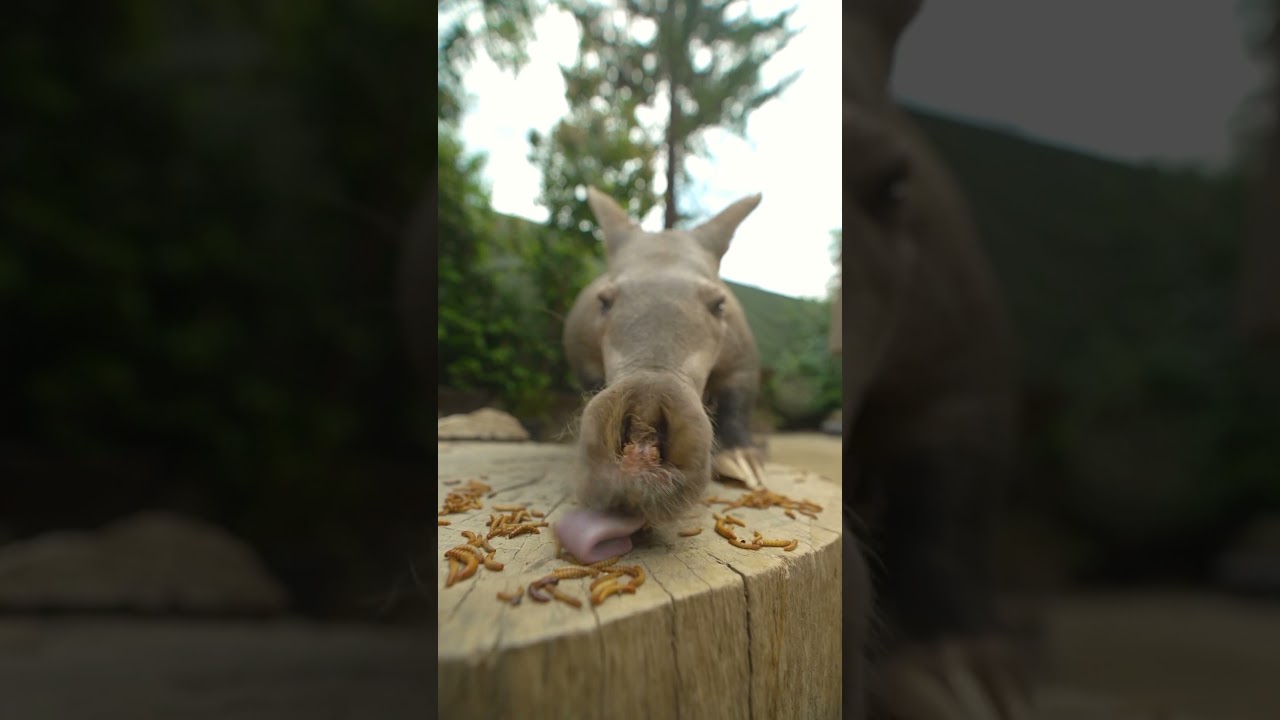- The Natural Habitat and Diet of Aardvarks
- The Role of Zoos in Wildlife Education and Conservation
- A Typical Day for Zola the Aardvark
- The Importance of Enrichment Activities in Captivity
- Impact of Public Engagement on Conservation Efforts
Aardvarks may not be the most well-known animals, but their peculiar characteristics and behaviors make them captivating. Among these fascinating creatures, Zola the Aardvark, a resident of a prominent zoo, presents a unique opportunity for visitors and researchers alike. Here, we delve into the intriguing world of aardvarks, explore the details of Zola’s daily routine, and examine the broader implications of this animal’s life in captivity.
The Natural Habitat and Diet of Aardvarks
Aardvarks hail from the diverse and often harsh landscapes of sub-Saharan Africa. Their adaptability allows them to thrive in a variety of environments, from savannas and grasslands to deciduous forests. Aardvarks are nocturnal creatures, spending their nights foraging for food. Their diet primarily consists of ants and termites, which they locate with their keen sense of smell.
Aardvarks possess specialized physical adaptations that aid them in their quest for insects. Their long, tubular snouts enable them to burrow into ant and termite nests, while their sticky tongues can extend up to twelve inches to capture insects effectively. Much of their behavior revolves around locating and consuming large quantities of these insects. Consequently, aardvarks play a critical role in controlling insect populations, thereby contributing to the balance of their ecosystems.
The Role of Zoos in Wildlife Education and Conservation
Zoos serve as critical institutions for wildlife education and conservation. By housing various species, zoos provide the public with opportunities to learn about animals they might never encounter in the wild. The story of Zola the Aardvark exemplifies how these facilities can raise awareness about lesser-known species and their ecological roles.
Education programs and interactive exhibits involving animals like Zola are tailored to enhance understanding and appreciation of biodiversity. Visitors learn about the aardvark’s natural behaviors, diet, and role in its habitat. Moreover, zoos often collaborate with researchers and conservationists to develop breeding programs that can bolster populations of endangered species. This focus on education and conservation underpins the zoo’s mission to protect and sustain wildlife.
A Typical Day for Zola the Aardvark
Life in captivity for an aardvark like Zola is carefully structured to mimic their natural behaviors and needs. Contrary to the lax schedules of many animals, Zola’s routine is orchestrated with meticulous care to reflect their innate nocturnal lifestyle. As dusk approaches, Zola becomes active, exploring her enclosure and engaging in various enrichment activities designed by zookeepers.
Snack time with Zola is a particularly engaging part of her routine. By simulating foraging behavior, keepers spread insects throughout her habitat, which Zola then hunts down using her acute sense of smell. This feeding method not only meets her dietary needs but also provides essential mental stimulation, reinforcing natural behaviors.
Enrichment activities play a vital role beyond just snack time. Burrowing simulations, scent trails, and puzzle feeders encourage Zola to employ skills she would use in the wild. These activities are crucial for maintaining physical health and preventing boredom, which can lead to stress in captive animals.
The Importance of Enrichment Activities in Captivity
Enrichment activities are not mere luxuries; they are foundational to the well-being of animals in zoos. For Zola, these activities are designed to challenge her innate abilities and prevent the monotony that can lead to stereotypic behaviors. Enrichment for aardvarks often includes digging substrates, hidden food items, and structures that promote physical exploration.
Aardvarks are naturally solitary and spend their time foraging for insects. In captivity, replicating these natural behaviors is essential. Enrichment plans are frequently updated based on ongoing observations and research. This adaptive approach ensures that Zola remains engaged and healthy.
Impact of Public Engagement on Conservation Efforts
Public engagement with animals like Zola the Aardvark has far-reaching implications. By fostering a connection between zoo visitors and wildlife, these interactions can inspire conservation efforts. Individuals often leave with a greater appreciation for the species they encounter and a heightened awareness of conservation challenges.
Programs featuring Zola offer educational narratives that highlight the importance of every animal within an ecosystem. By sharing the story of Zola’s life and her role in the natural world, zoos are able to convey critical conservation messages. These stories often extend beyond the zoo, influencing public opinions and behaviors toward wildlife conservation.
In addition, zoos often partner with conservation organizations to support research and fieldwork. Funds generated through public engagement programs help finance these critical efforts. Conservation initiatives can range from habitat restoration projects to anti-poaching patrols, all aimed at preserving biodiversity.
In sum, snack time with Zola the Aardvark encompasses more than just a feeding session. It symbolizes the intricate care, extensive planning, and deep commitment that zoos invest in their residents. From preserving natural behaviors through enrichment to educating the public about conservation, Zola’s routine embodies the multifaceted role of modern zoological institutions. By integrating scientific knowledge with engaging experiences, zoos play an indispensable role in both wildlife conservation and public education.
*****
Source Description
Zola’s bug-eating form is so good, we had to slow it down 🪱
#aardvark #sneefin #slowmode #sandiegozoo
Facebook – https://www.facebook.com/SanDiegoZoo/
Instagram – https://www.instagram.com/sandiegozoo/
Twitter – https://twitter.com/sandiegozoo
Giphy – https://giphy.com/sandiegozoo
TikTok – https://www.tiktok.com/@sandiegozoo
Twitch – https://www.twitch.tv/sandiegozoo


